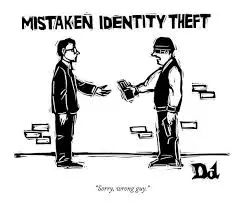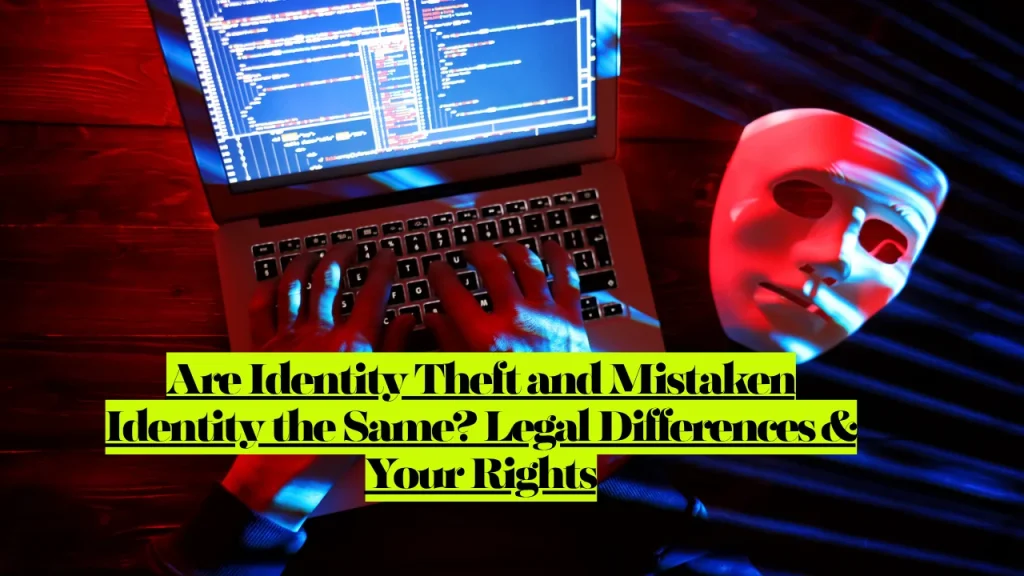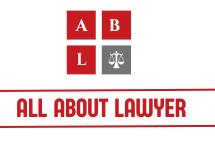Are Identity Theft and Mistaken Identity the Same? Legal Differences & Your Rights
No, identity theft and mistaken identity are fundamentally different legal concepts with distinct claims and remedies. Identity theft involves fraudulent, unauthorized use of personal information under 15 U.S.C. § 1681 (Fair Credit Reporting Act) and 18 U.S.C. § 1028 (Identity Theft and Assumption Deterrence Act), while mistaken identity involves erroneous identification in legal or administrative contexts under 42 U.S.C. § 1983 (false arrest) and Fourth Amendment protections. Understanding which situation applies determines available legal claims, defendants, damages, and procedures.
Legal Definition: Identity Theft
Identity theft occurs when someone unlawfully uses another person’s personal identifying information—Social Security number, credit card details, name, or financial accounts—for fraudulent purposes without consent.
Under 18 U.S.C. § 1028(a)(7), identity theft is defined as knowingly transferring, possessing, or using a means of identification of another person with intent to commit, aid, or abet any unlawful activity that violates federal or state law. The crime requires fraudulent intent and unauthorized use of personal information.
Federal law establishes identity theft as a felony with civil remedies. Victims can pursue civil claims against perpetrators, credit reporting agencies, and businesses that failed to protect data under 15 U.S.C. § 1681n (FCRA civil liability) and state identity theft statutes.
Legal Definition: Mistaken Identity
Mistaken identity occurs when law enforcement, witnesses, or institutions erroneously identify the wrong person as a suspect, perpetrator, or party to legal proceedings.
Mistaken identity is a defense in criminal law claiming actual innocence by asserting eyewitnesses incorrectly identified the defendant when the person seen was someone else. Unlike identity theft, mistaken identity involves no fraudulent intent—only confusion or error about who someone is.
The Fourth Amendment protects individuals from unreasonable searches and seizures, including arrests based on mistaken identity without due diligence by law enforcement. Victims pursue civil claims under 42 U.S.C. § 1983 for constitutional violations.
Key Legal Differences Between Identity Theft and Mistaken Identity
Fraudulent Intent: Identity theft requires intentional fraud. Mistaken identity involves accidental or negligent misidentification.
Type of Harm: Identity theft damages credit, finances, and reputation through unauthorized use of personal information. Mistaken identity causes wrongful arrest, detention, or false criminal accusations.
Defendants: Identity theft lawsuits target perpetrators, credit bureaus, and businesses. Mistaken identity claims sue law enforcement officers, government entities, and individuals who made false accusations.
Constitutional Basis: Identity theft falls under Commerce Clause authority (Article I, Section 8) and statutory consumer protections. Mistaken identity claims arise from Fourth Amendment protections against unreasonable seizure and Fourteenth Amendment due process violations under 42 U.S.C. § 1983.
Legal Framework: Identity theft uses 15 U.S.C. § 1681 (FCRA), 18 U.S.C. § 1028, and state identity theft statutes. Mistaken identity relies on 42 U.S.C. § 1983, defamation law, and malicious prosecution claims.
Available Legal Claims for Identity Theft
Identity theft victims can file multiple civil claims:
- Fair Credit Reporting Act Violations (15 U.S.C. § 1681n) – Against credit bureaus for inaccurate reporting
- Fraud (state common law) – Against perpetrators for intentional misrepresentation
- Negligence (state tort law) – When businesses fail to protect personal data
- Breach of Contract – When companies violate data protection agreements
- State Identity Theft Statutes – Many states provide additional civil remedies beyond federal law
- Emotional Distress – For psychological harm from identity theft
- Defamation (in limited circumstances) – When false information damages reputation
Under 15 U.S.C. § 1681n(a)(1)(A), victims recover actual damages or statutory damages of $100-$1,000 per willful violation, plus attorney’s fees under § 1681n(a)(3).
Available Legal Claims for Mistaken Identity
Mistaken identity victims pursue different legal theories:
- 42 U.S.C. § 1983 Civil Rights Claims – For Fourth Amendment violations (unlawful seizure) or Fourteenth Amendment due process violations when law enforcement acts under color of state law
- False Arrest/False Imprisonment – When detained without probable cause
- Defamation (Libel/Slander) – When false accusations harm reputation; written defamation is libel, spoken defamation is slander
- Malicious Prosecution – When legal proceedings initiated without probable cause and with malice
- Negligence – When officers fail to exercise reasonable care, such as inadequate training, poor investigative practices, or failing to verify critical information before arrest
- Excessive Force – When arrest involves unreasonable force under Fourth Amendment
Recent cases show mistaken identity claims face qualified immunity challenges but can succeed with proper evidence of constitutional violations.
Damages Available for Identity Theft
Identity theft victims can recover substantial compensation:
Statutory Damages: $100-$1,000 per willful FCRA violation under 15 U.S.C. § 1681n without proving actual harm.
Compensatory Damages: Actual losses including fraudulent charges, credit repair costs, lost wages from time spent resolving theft, medical bills from stress.
Punitive Damages: Available under 15 U.S.C. § 1681n(a)(2) when credit bureaus act with reckless disregard for FCRA obligations.
Restitution: Under 18 U.S.C. § 1028(b)(4), courts order restitution for time spent remedying identity theft harm, including obtaining new Social Security numbers or correcting tax documents.
Attorney’s Fees: Recoverable under 15 U.S.C. § 1681n(a)(3) for successful FCRA claims.
Recent settlements demonstrate recovery potential. MarineMax’s $1 million settlement provides up to $5,000 for documented identity theft losses. Capital One’s $425 million settlement in 2025 compensates over 100 million customers affected by data breach.
Damages Available for Mistaken Identity
Mistaken identity victims recover different compensation:
Compensatory Damages: For emotional distress, lost income, missed opportunities, damage to reputation, and peace of mind from false accusations.
Punitive Damages: Under 42 U.S.C. § 1983 when government officials act with malicious intent or reckless disregard for rights.
Nominal Damages: Even without proving economic harm, constitutional violations may warrant nominal awards.
Attorney’s Fees: Under 42 U.S.C. § 1988, prevailing plaintiffs in Section 1983 cases recover attorney fees.
In 2022, Johnny Depp won $10.35 million in defamation damages against Amber Heard for false allegations, later settled for $1 million. Penny McCarthy’s case against Arizona law enforcement for mistaken identity arrest demonstrates potential damages for wrongful detention, strip searches, and constitutional violations.
Who Can Be Sued: Identity Theft vs. Mistaken Identity
Identity Theft Defendants:
- Individual perpetrators who stole and used personal information
- Credit reporting agencies (Equifax, Experian, TransUnion) under 15 U.S.C. § 1681
- Financial institutions that disclosed information improperly
- Companies that failed to implement reasonable cybersecurity measures
- Data furnishers who report false information to credit bureaus
Mistaken Identity Defendants:
- Law enforcement officers acting under color of state law who made wrongful arrests under 42 U.S.C. § 1983
- Municipalities and police departments for policies, customs, or failure to train that led to wrongful arrests
- Individuals who made false accusations resulting in mistaken identity arrests
- Prosecutors (in limited circumstances when immunity doesn’t apply)
- Private entities working with law enforcement (security companies, facial recognition providers)
Qualified immunity often shields government officials from liability unless they violated clearly established constitutional rights.

Statute of Limitations: Identity Theft
Identity theft claims have specific time limits:
FCRA Claims (15 U.S.C. § 1681p): Two years from discovering the violation or five years from when violation occurred, whichever comes sooner. If you discover inaccurate reporting four years after it began, you have only one year remaining to file.
State Identity Theft Claims: Vary by state. Some follow the two-year discovery rule, others impose different deadlines ranging from one to six years.
Fraud Claims: Typically two to four years from discovery under state law.
Each transmission of incorrect credit information may constitute a separate violation with its own limitations period under the continuing violation doctrine, though courts split on this interpretation.
Statute of Limitations: Mistaken Identity
Mistaken identity claims face different deadlines:
42 U.S.C. § 1983 Claims: Governed by state statute of limitations for personal injury, typically two to three years from the date of arrest or detention. Federal courts borrow state law for Section 1983 limitations periods.
Defamation Claims: Generally one to three years depending on state law, running from publication or communication of false statement.
Malicious Prosecution: Limitations period begins when criminal proceedings terminate in plaintiff’s favor, not when prosecution commenced.
False Arrest: Limitations run from date of arrest or release from custody, depending on jurisdiction.
Acting quickly is critical because qualified immunity analysis depends on clearly established law at the time of violation.
Evidence Required: Identity Theft
Winning identity theft lawsuits requires documentation:
- Police Reports: File identity theft reports with local law enforcement and FBI financial division
- FTC Identity Theft Report: Official complaint at IdentityTheft.gov establishes victim status
- Credit Reports: Showing fraudulent accounts, unauthorized inquiries, inaccurate information
- Financial Records: Bank statements documenting unauthorized transactions
- Communications: Correspondence with creditors, credit bureaus, collection agencies
- Timeline: Records tracking time spent resolving identity theft for restitution calculations
- Proof of Harm: Documentation linking financial losses to identity theft
Settlement claims require evidence losses were likely caused by data breach, such as debt collection letters, credit monitoring alerts, identity theft complaints filed with authorities.
Evidence Required: Mistaken Identity
Mistaken identity cases need different proof:
- Arrest Records: Documentation of wrongful arrest, including warrant details, booking information, mugshots, fingerprints
- Alibi Evidence: Proof you were elsewhere when alleged crime occurred
- Identification Evidence: Expert testimony on eyewitness reliability, lineup procedures, identification methods showing procedural flaws
- Police Records: Body camera footage, incident reports, communications between officers
- Witness Statements: Supporting your innocence or police misconduct
- DNA/Fingerprint Evidence: Scientific proof showing misidentification
- Constitutional Violation Proof: Evidence officers lacked probable cause or failed to exercise due diligence
Officers violated Fourth Amendment by arresting Penny McCarthy without checking driver’s license or running basic identity checks, despite her persistent claims she was not the wanted person.

Legal Process: Identity Theft Claims
Step 1: Report Identity Theft – File police report and FTC complaint at IdentityTheft.gov before court filing.
Step 2: Dispute with Credit Agencies – Under 15 U.S.C. § 1681i, dispute errors with credit bureaus to trigger consumer protection provisions.
Step 3: Calculate Statute of Limitations – Determine exact violation dates for filing deadline.
Step 4: File Complaint – Federal courts typically handle FCRA claims under 28 U.S.C. § 1331 (federal question jurisdiction). Detail violations, defendants, damages sought, supporting evidence.
Step 5: Discovery – Obtain credit bureau records, internal communications, policies showing FCRA violations.
Step 6: Settlement or Trial – Many identity theft cases settle. Class action settlements require preliminary approval, claim submission period, final fairness hearing.
Legal Process: Mistaken Identity Claims
Step 1: Document Constitutional Violation – Preserve evidence of wrongful arrest, detention, use of force.
Step 2: File Notice of Claim – Many jurisdictions require notice to government entities before filing Section 1983 claims, typically 30-180 days.
Step 3: File Section 1983 Complaint – Under 42 U.S.C. § 1983, sue state actors who violated constitutional rights acting under color of law.
Step 4: Overcome Qualified Immunity – Demonstrate officers violated clearly established constitutional law that reasonable officers would have known.
Step 5: Prove Municipal Liability – For city/department claims, show policy, custom, or failure to train caused violation.
Step 6: Discovery and Expert Testimony – Obtain police procedures, training records, identification protocols. Expert testimony can establish standard police practices and how deviations contributed to mistaken identity.
Recent Case Law: Identity Theft (2024-2025)
Capital One reached $425 million settlement in 2025 for 2019 data breach affecting 100 million customers. Payments vary based on documented losses.
HCA Healthcare’s multi-million settlement for July 2023 breach affecting 11.27 million patients includes up to $5,000 for documented identity theft losses.
National Public Data breach in 2024 potentially affecting billions prompted class actions alleging failure to secure Social Security numbers and personal information.
Communication Federal Credit Union settlement offers up to $7,500 for documented costs from data breach resulting in identity theft.
Recent Case Law: Mistaken Identity (2024-2025)
Penny McCarthy v. United States (2024): Federal agents arrested McCarthy in Arizona based on warrant for Carole Rozak without checking driver’s license or basic identity verification. She was detained overnight, strip searched three times, despite persistent claims of mistaken identity. Case demonstrates Fourth Amendment violations when officers fail to exercise due diligence.
Harvey Eugene Murphy Jr. v. EssilorLuxottica (2024): Murphy, a white man, was arrested after facial recognition software misidentified him in Houston Sunglass Hut robbery. Lawsuit challenges use of low-quality security footage fed into facial recognition systems without proper police verification.
According to National Registry of Exonerations, as of October 2024, 64% of exonerations involved perjury or false accusations, highlighting prevalence of mistaken identity in criminal justice.
Challenges in Identity Theft Cases
Finding perpetrators and recovering assets proves difficult. Identity thieves typically lack funds to satisfy judgments.
Courts split on whether new disputes with credit bureaus refresh statute of limitations. Some allow indefinite extensions while others run time from first dispute.
Defendants commonly assert statute of limitations defenses, claim permissible purposes for accessing credit information, argue no actual harm occurred, or assert FCRA compliance.
Proving causation between data breaches and specific identity theft requires documentation linking fraudulent activity to the breach.
Challenges in Mistaken Identity Cases
Qualified immunity shields officers from liability unless they violated clearly established constitutional rights. The doctrine often allows wrongful arrests without accountability and inhibits development of clear constitutional rules.
Overcoming qualified immunity requires showing similarly situated precedent establishing unconstitutionality of officer’s conduct. Without prior case law in specific jurisdiction with nearly identical facts, immunity applies.
Proving negligence requires establishing duty of care, breach, and causation—that officers’ failure to verify critical information directly caused wrongful arrest.
Eyewitness identification is inherently unreliable. Mistaken identification occurs more frequently when witnesses are under pressure, have memory limitations, belong to different races than suspects, or have obstructed viewpoints.
How to Determine Which Situation Applies
You’re Dealing with Identity Theft If:
- Someone used your Social Security number, credit cards, or financial accounts without permission
- Fraudulent accounts appear on your credit report
- You receive bills for purchases you didn’t make
- Tax returns show income you didn’t earn
- Debt collectors contact you about unknown debts
- Your credit score drops due to fraudulent activity
You’re Dealing with Mistaken Identity If:
- Law enforcement arrested you for crimes committed by someone else
- Police held you despite vigorous protests and claims you’re the wrong person
- Eyewitnesses or facial recognition systems incorrectly identified you
- You face criminal charges for actions you didn’t commit
- Administrative confusion led to legal consequences
- Someone mistakenly identified you through lineups, photo arrays, or databases
When to Hire an Attorney
Identity Theft: Consider legal representation when credit bureaus refuse corrections after disputes, facing complex FCRA violations with multiple defendants, substantial damages exceed small claims limits, or joining class action data breach settlements.
Mistaken Identity: Seek immediate counsel when facing criminal charges, arrested without probable cause, subjected to excessive force, or pursuing 42 U.S.C. § 1983 claims. Section 1983 claims require demonstrating misconduct resulted from municipal policy, custom, or failure to train—complex legal standards requiring experienced representation.
Many identity theft attorneys work on contingency fees. Section 1983 attorneys may also accept contingency arrangements. Successful FCRA claims under 15 U.S.C. § 1681n(a)(3) and Section 1983 claims under 42 U.S.C. § 1988 allow recovery of attorney fees.
FAQs: Identity Theft vs. Mistaken Identity
Q: Are identity theft and mistaken identity the same thing?
No. Identity theft involves someone fraudulently using your personal information without authorization under 18 U.S.C. § 1028. Mistaken identity involves erroneous identification by law enforcement or witnesses under 42 U.S.C. § 1983. They require different legal claims, target different defendants, and result in different damages.
Q: What is the main legal difference between identity theft and mistaken identity?
Identity theft requires fraudulent intent and unauthorized use of personal information for financial gain. Mistaken identity involves accidental or negligent misidentification without fraudulent intent. Identity theft uses FCRA (15 U.S.C. § 1681) and federal identity theft statutes. Mistaken identity uses Fourth Amendment claims under 42 U.S.C. § 1983.
Q: What damages can I recover for identity theft?
Under 15 U.S.C. § 1681n, you can recover statutory damages of $100-$1,000 per willful violation without proving harm, actual damages for all provable losses, punitive damages for reckless violations, time-based restitution, and attorney’s fees. Recent settlements show victims recovering $2,000-$7,500 for documented losses.
Q: What damages can I recover for mistaken identity?
Compensatory damages for emotional distress, lost income, opportunities, and reputation damage. Punitive damages under 42 U.S.C. § 1983 for malicious conduct. Attorney’s fees under 42 U.S.C. § 1988. Johnny Depp’s defamation case over false accusations resulted in $10.35 million jury award, later settled for $1 million.
Q: What is the statute of limitations for each?
Identity theft FCRA claims: Two years from discovery or five years from violation under 15 U.S.C. § 1681p. Mistaken identity Section 1983 claims: State personal injury statute of limitations, typically two to three years from arrest. Act quickly as both deadlines are strictly enforced.
Q: Can I sue for both identity theft and mistaken identity?
Potentially, if someone stole your identity causing law enforcement to arrest you. You’d have identity theft claims against perpetrators and credit bureaus under 15 U.S.C. § 1681, plus mistaken identity claims against law enforcement under 42 U.S.C. § 1983 if arrested without due diligence. These are separate legal theories with different defendants and procedures.
Q: How do I prove mistaken identity in court?
Demonstrate officers lacked probable cause, failed to verify critical information before arrest, used unreliable identification procedures, or exercised inadequate investigative practices. Evidence includes alibi proof, DNA/fingerprint analysis, police body camera footage, and documentation showing officers ignored your protests about wrong identity. Expert testimony on eyewitness reliability strengthens cases.
Related Resources
For more guidance on legal issues, explore:
- Consumer Protection Attorney Who Handles Identity Theft Cases
- Should I Hire a Lawyer for Identity Theft
- Identity Theft Lawyer Cost
Disclaimer: This information is for educational purposes only and does not constitute legal advice. Identity theft and mistaken identity laws, available remedies, and case outcomes vary by state and jurisdiction. Consult official government resources, court records, or an attorney for specific guidance regarding your situation and legal options.
About the Author

Sarah Klein, JD, is a former consumer rights attorney who spent years helping clients with issues like unfair billing, product disputes, and debt collection practices. At All About Lawyer, she simplifies consumer protection laws so readers can defend their rights and resolve problems with confidence.
Read more about Sarah
